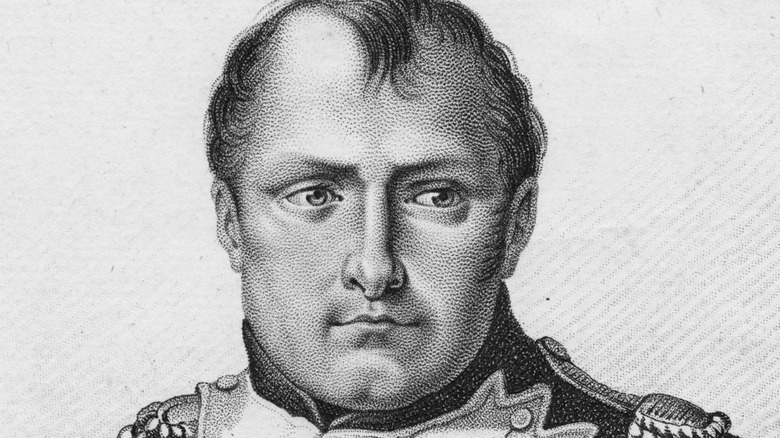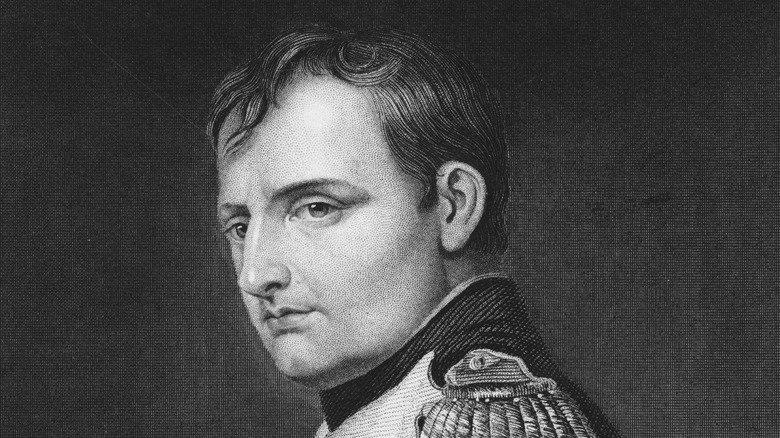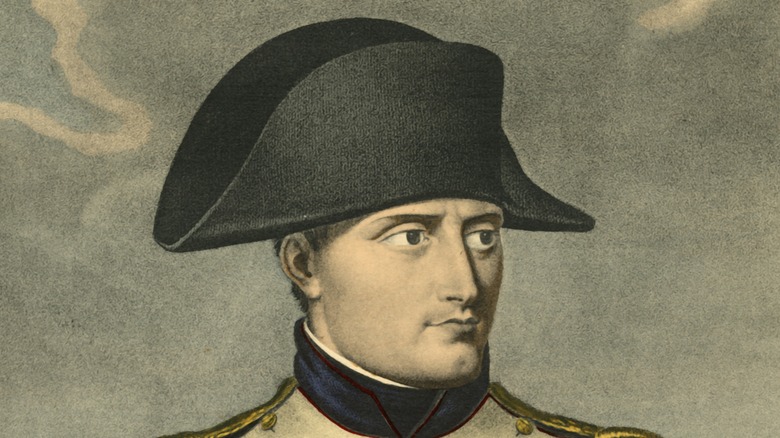How An Unlikely Part Of Napoleon Bonaparte's Anatomy 'Outlived' Him By Centuries
As emperor of France, Napoleon Bonaparte was both admired and loathed for his militaristic authority (via History). In 1799, he rose to power in a coup d'état. Per Britannica, Bonaparte had a lasting impact on France — his accomplishments include educational reform, establishing the Napoleonic Code, and expanding the French empire. However, another article from History explains that Bonaparte was a persona non grata by the end of his life. In 1815, he was exiled to Saint Helena Island in the South Atlantic Ocean. Napoleon Bonaparte died on the island on May 5, 1821, after suffering from various gastrointestinal issues. He was only 51.
While some believe that Bonaparte was poisoned, PBS reports that an autopsy conducted a day later concluded that the ruler died from stomach cancer. According to History, the autopsy was done by his doctor, Francesco Antommarchi. The doctor made a death mask of Bonaparte and removed his heart and intestines. In addition, The Washington Post states that a second individual who witnessed the autopsy noted that the doctor "taking advantage of a moment when the eyes of the English were not fixed on the body, had taken two little pieces from a rib." Peculiarly, for reasons that are not understood, Antommarchi also amputated Bonaparte's penis.
Napoleon Bonaparte's member had several owners
According to CNN, Francesco Antommarchi gave Napoleon Bonaparte's member to a priest named Ange Vignali. NPR writes that Vignali then took the organ to Corsica. Upon his death, History of Information states that Vignali's family opted to sell it to Maggs Bros. Ltd., a rare bookseller. The company eventually sold the penis in 1924 to a man named A.S.W. Rosenbach (via The Rosenbach). A company catalog from that year describes the organ as "a mummified tendon taken from Napoleon's body during the postmortem." In 1927, Bonaparte's penis and the other items from Vignali's collection were displayed at the Museum of French Arts in New York (per The Washington Post).
TIME reports that the relic, which was then over 100 years old, was in rough shape. Per Mental Floss, one witness likened it to a "maltreated strip of buckskin shoelace," while another said it looked like "a shriveled eel." In 1947, Rosenbach sold Bonaparte's penis to a man named Donald Hyde (per The Rosenbach). Hyde went on to sell it to John Fleming. NPR explains that at one point, the French government was offered the organ, but they rejected it. As Tony Perrottet, author of the book "Napoleon's Privates: 2,500 Years of History Unzipped, put it, "They wouldn't have anything to do with the penis."
The artifact has a forever home
History of Information reports that John Fleming sold Napoleon Bonaparte's penis to a dealer named Bruce Gimelson. Then in 1977, urologist John J. Lattimer purchased the organ (per The Washington Post). NPR notes that Lattimer had a penchant for collecting macabre historical items, including a bloodstained collar worn by Abraham Lincoln and upholstery from the limousine President John F. Kennedy was shot in. In any case, he decided to store the penis under his bed at his New Jersey home. Tony Perrottet explained (per NPR), "He thought that fun was being poked at it, that it was an object of derision."
Lattimer refused to exhibit the organ. Mental Floss reports that his daughter, Evan Lattimer, inherited Bonaparte's penis after his 2007 death. In a 2014 interview with Channel 4, Evan shared that like her father, she was not going to allow the member to be filmed or photographed. "Dad believed that urology should be proper and decent and not a joke," she said. However, Perrottet was later allowed to view the object and told NPR why he was so fascinated with it. He said, "It's sort of a symbol to me of everything that's interesting about history." Perrottet added, "It sort of combines love and death and sex and tragedy and farce all in this one story."


